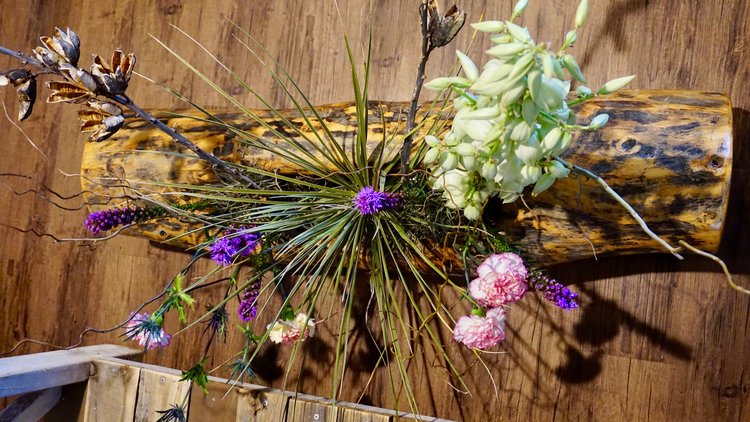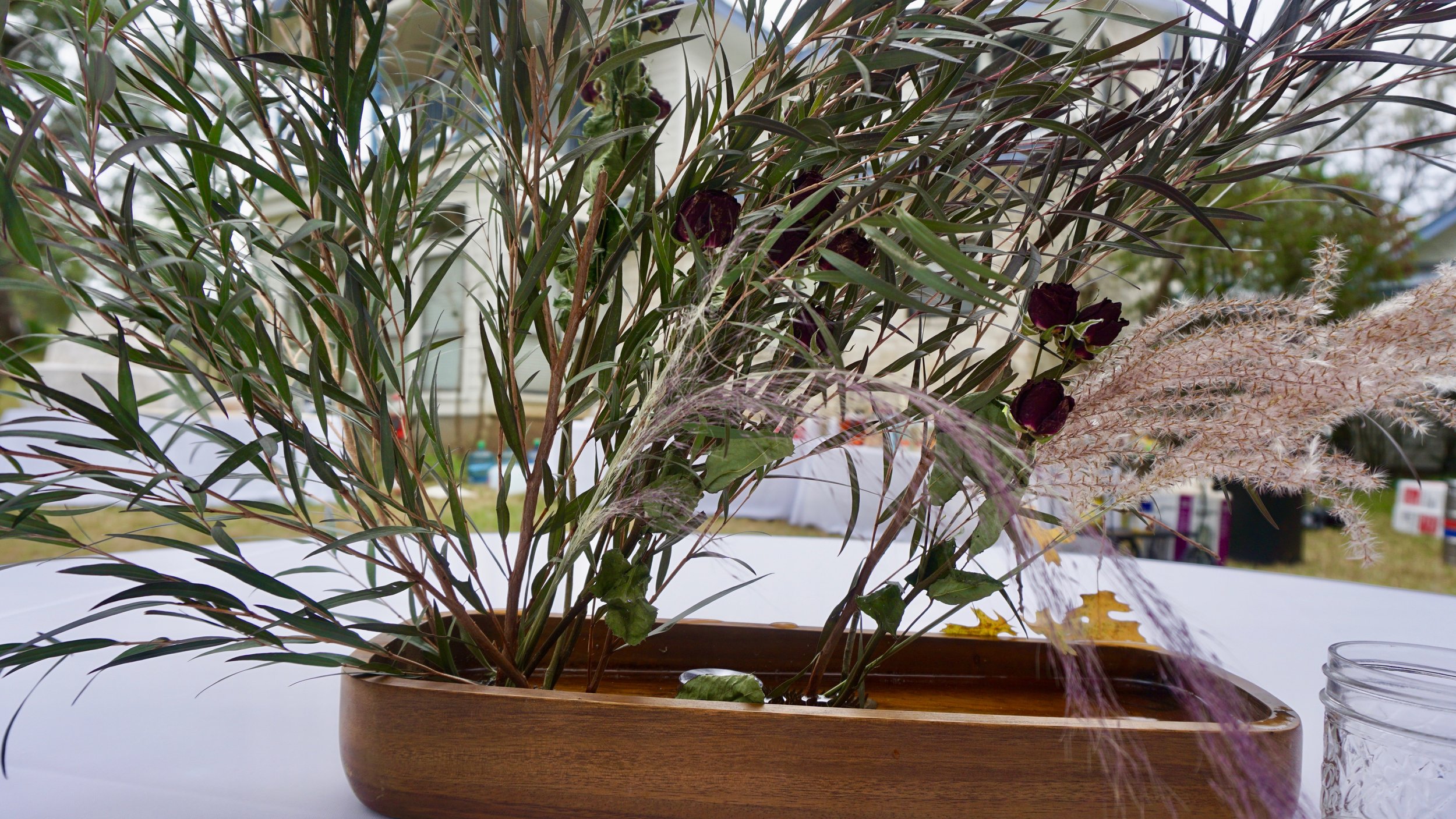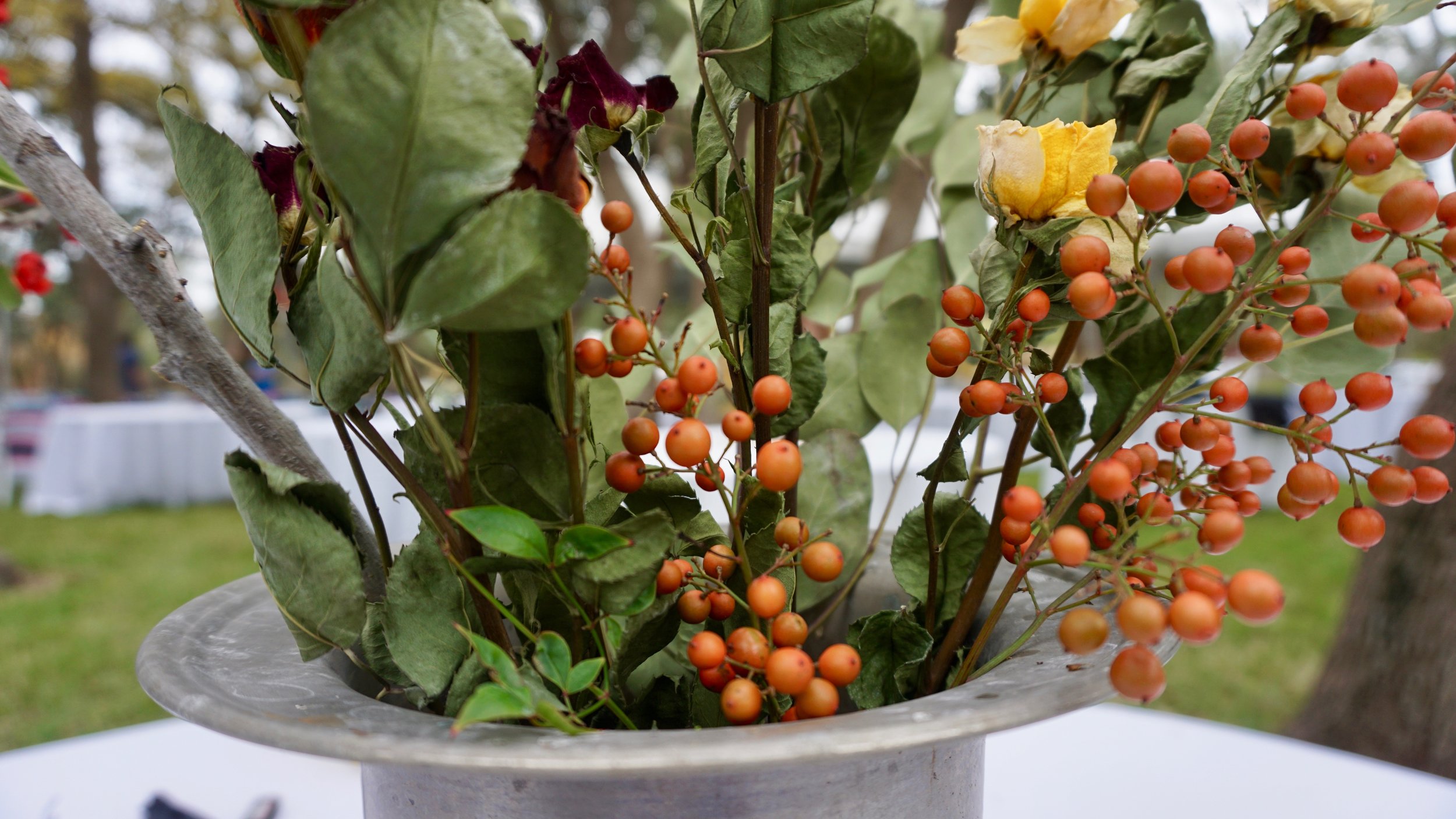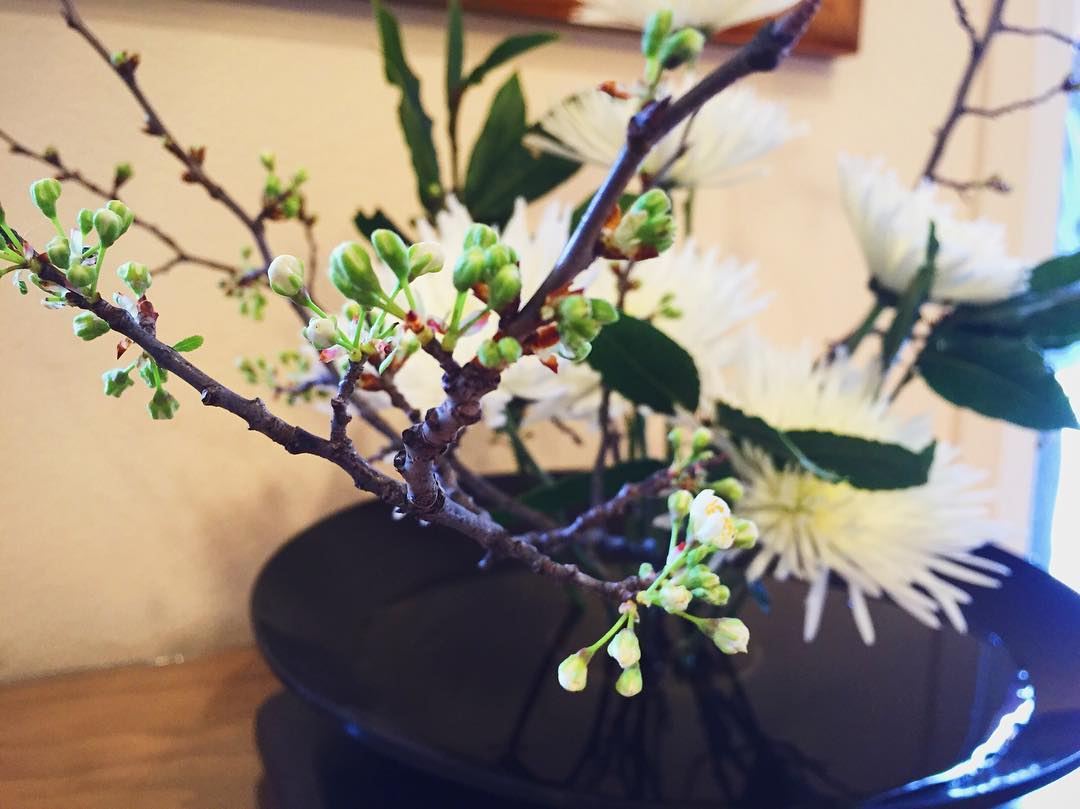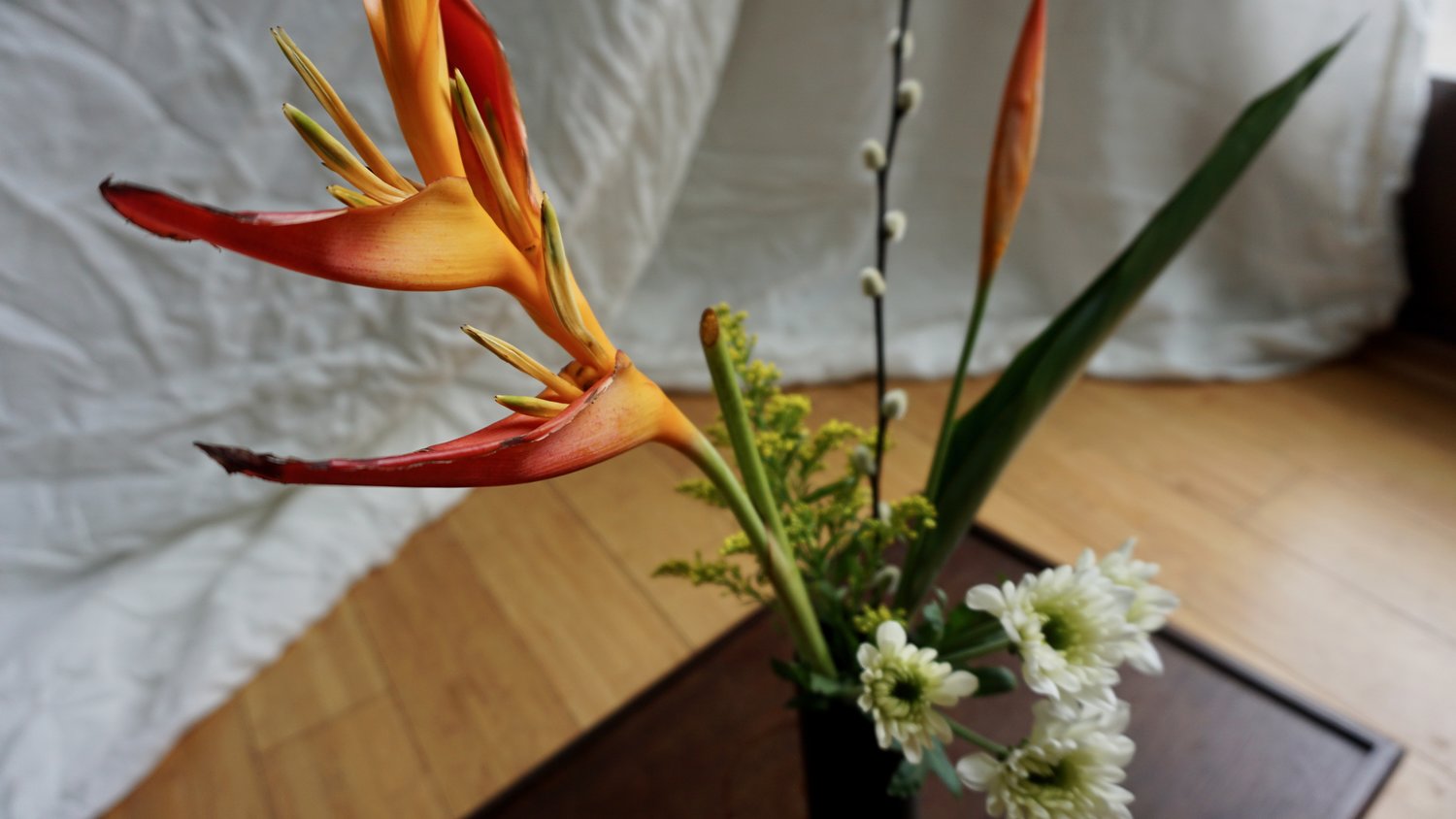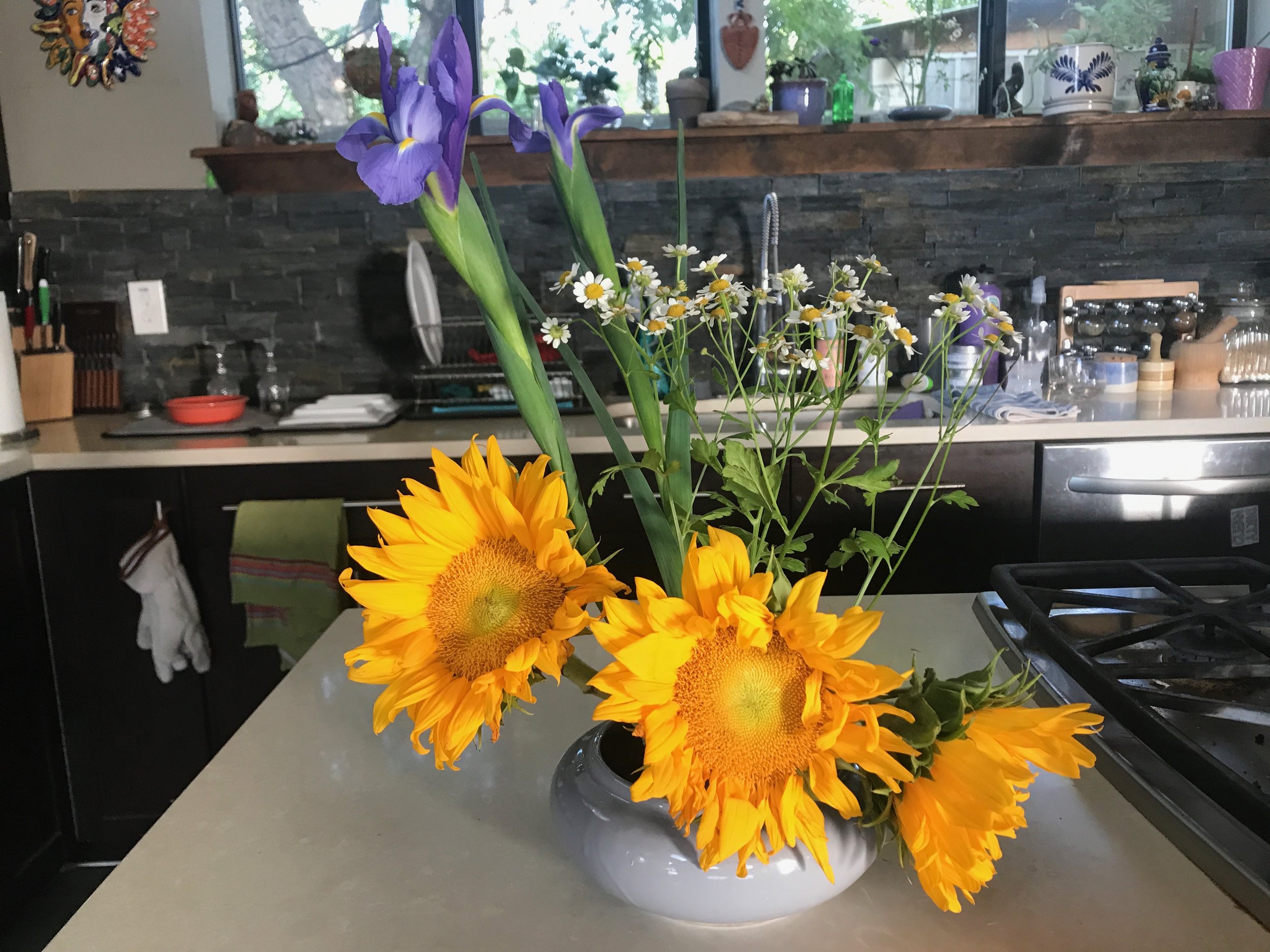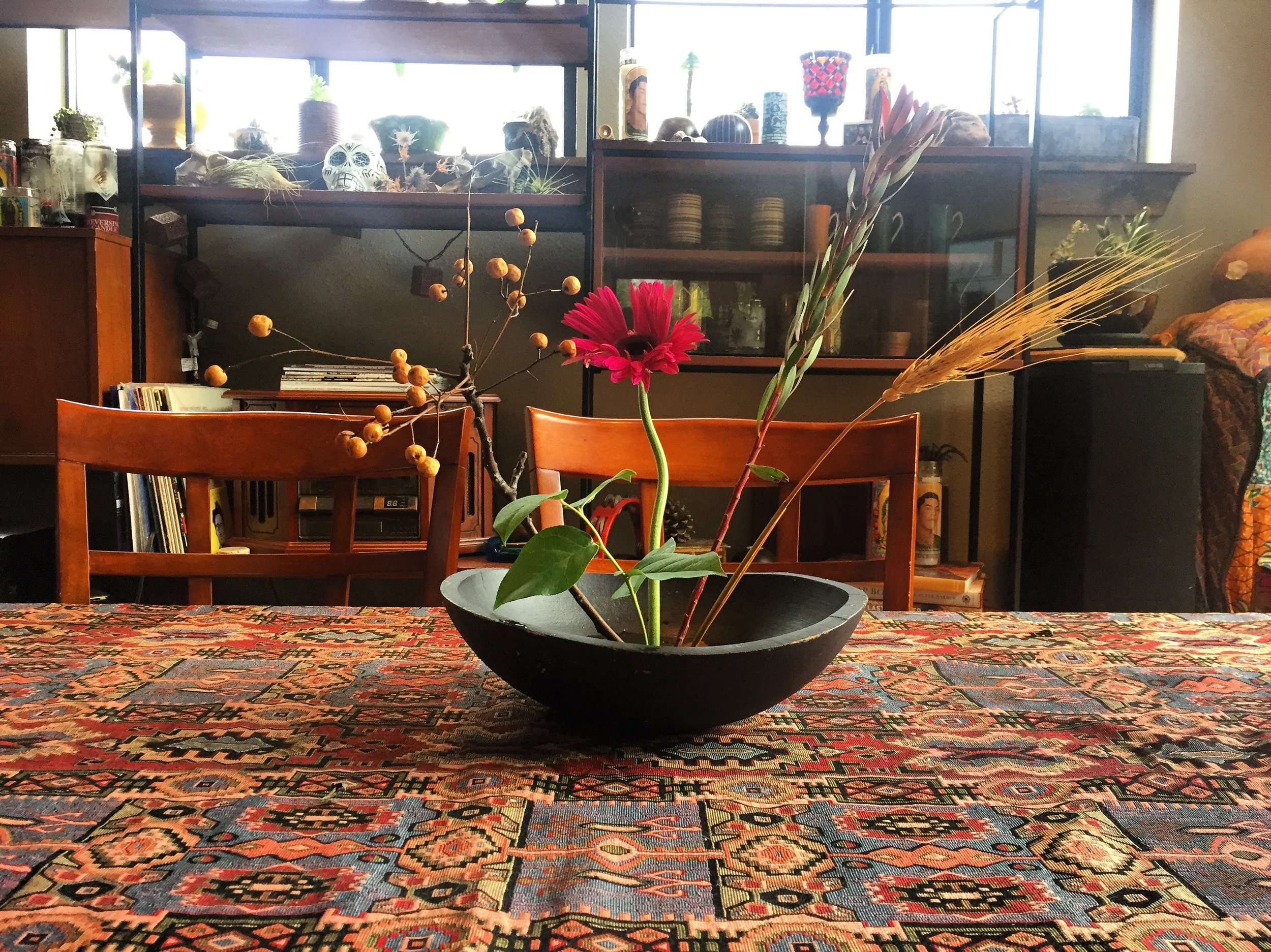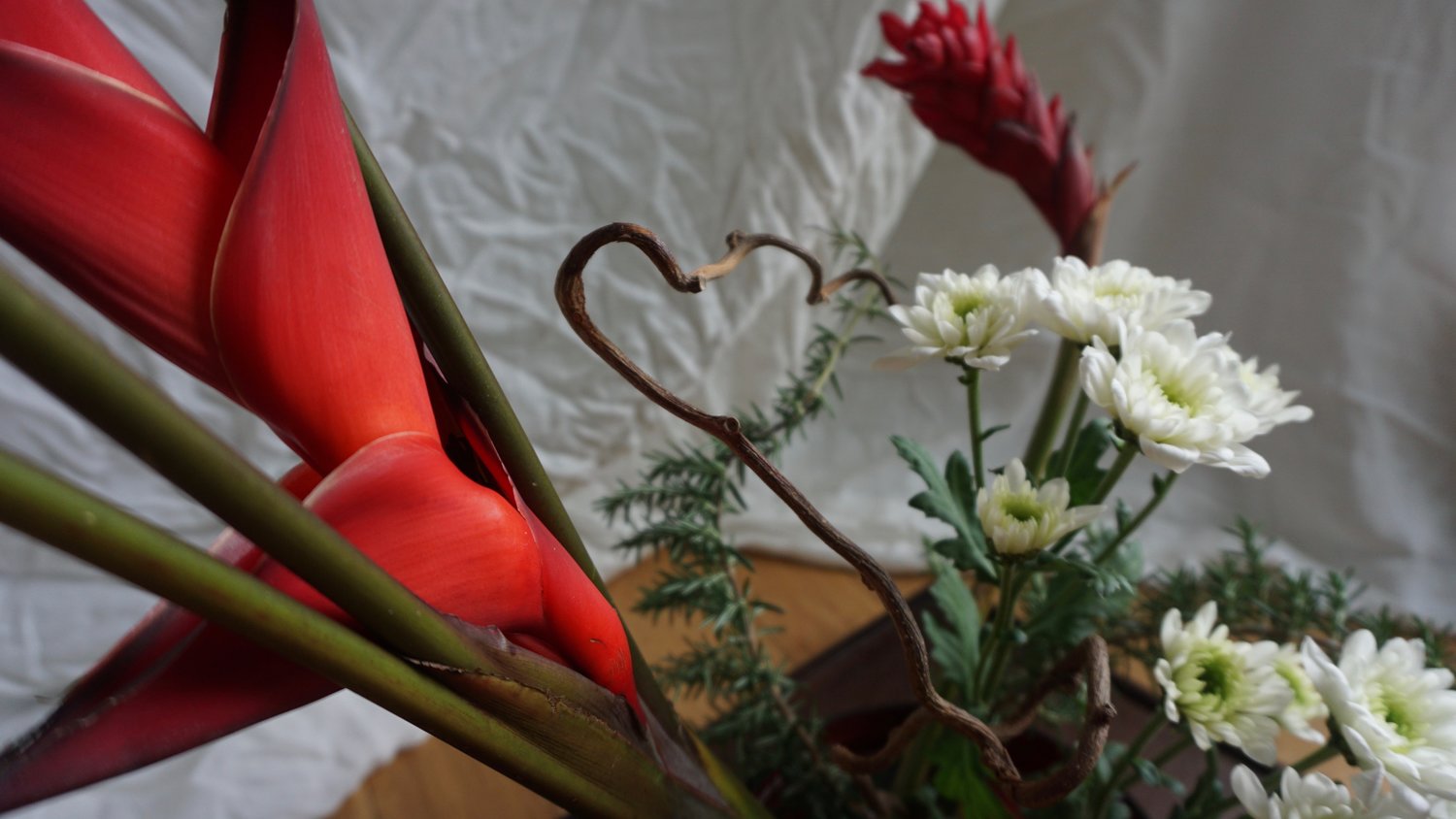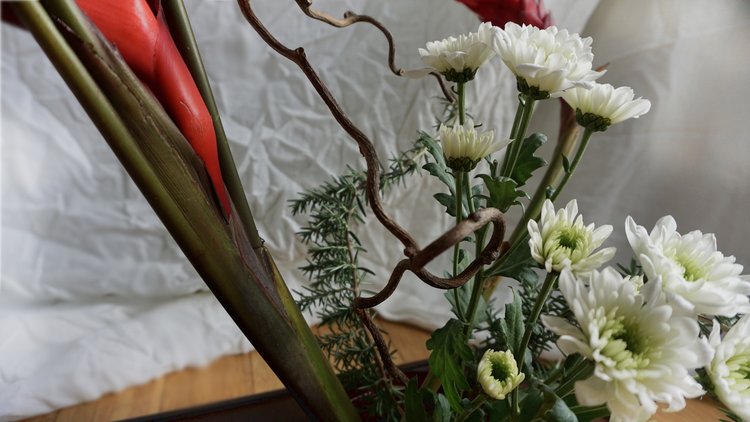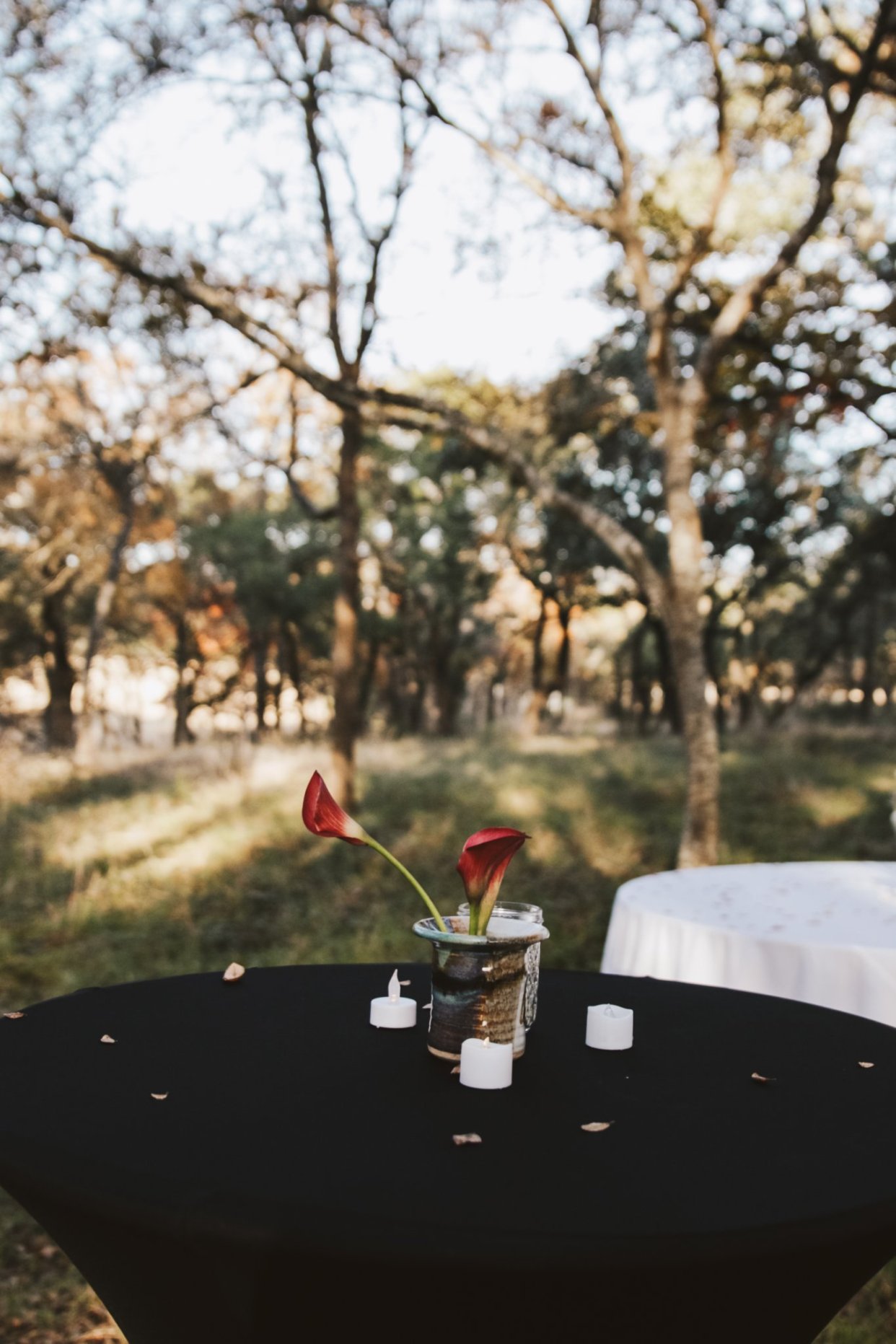Ikebana (生け花, "living flowers") is a Japanese art form of contemplative floral arrangement that has become one of my favorite art forms to practice. It is also known as Kadō (華道, "way of flowers") and is considered one of the three classical Japanese arts of refinement.
The form has been practiced for more than 600 years. It has evolved during this long period from what were originally Buddhist offerings that were placed on the altar of temples into a developed art form free of its religious origins that are displayed in the home. Practitioners use flowers, branches, and leaves to create living pieces of art. There are many schools of Ikebana, but I have been taught in the Sogetsu School and have studied under artists who venture into the unknown territory of free form arranging and personally have been moving into the more abstract expressionist practices with respectful nods toward the old styles.
Ikebana is an art form that is deeply meditative. Creating an arrangement is typically done in silence to allow the artist to observe and meditate on the beauty of nature so that insight into the infinite and fundamentally sound nature of existence can arise. Seasoned designers realize not only the importance of silence, but also the importance of space, which is not always meant to be filled, but created and preserved through the arrangements. This ties into other principles of Ikebana including minimalism, shape and line, form, humanity, aesthetics, and balance.
It is also imbued with “hidden” meaning. Meaning has been attributed to flowers for thousands of years across the planet, but particularly in Japan. The concept of hanakotoba (花言葉) is the Japanese form of the language of flowers. It is sometimes called floriography, and is a kind of cryptological communication through flowers themselves. While I have been practicing Ikebana for a number of years, I have only just begun my education of hanakotoba. I immensely enjoy exploring the aspects of hanakotoba to the degree I understand it within the relationship between the viewer and the arrangement. In hanakotoba, the emotional connection and poetic communication in flowers occurs directly between the recipient or viewer without needing the use of words.
To become a masterful artist that can express hanakotoba with elegance (something I have not yet fully accomplished) requires a patient commitment to the art and discipline to see it through. The discipline cultivated when arranging flowers in this way creates a situation wherein the artist may experience a deep level of connectivity to the land, seasons, and plants. This art form opens up the possibility of a more nuanced understanding of context of the surrounding ecology and forces the artist to engage with an intense degree of focus and presence. The physicality of arranging forces the artist to open up to the fundamental concepts of space, harmony, and asymmetry.
“The staying power needed for lifelong practice and obligatory study is probably the hardest thing of all. One could manage in a fairly short time to learn the traditional forms of Japanese flower arrangement by heart or to copy them mechanically. But anyone who takes it seriously, discovers that the art of flowers evokes and requires a slow inward transformation and maturation. Only then can one go the ‘flowers’ way’. Everything else is contingent on this requirement.”
My First Arrangement
My first arrangement, done under the instruction of my teacher, Iris Ramos, on a rainy Saturday in Austin, TX.









